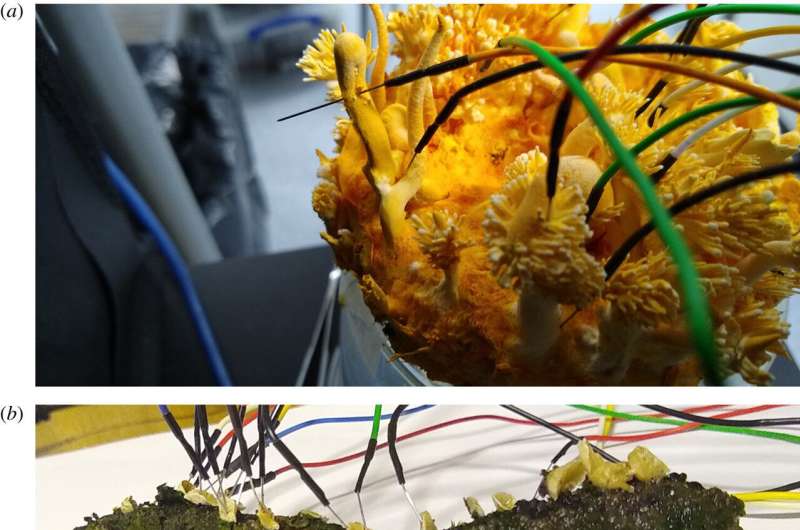April 7, 2022 report
Identifying the basic structure of the language of fungi

Andrew Adamatzk, a professor at the University of the West of England's Unconventional Computing Laboratory, UWE, in the U.K. has found that the electrical signal clusters sent by several types of fungi resemble human vocabularies. In his paper published in the journal Royal Society Open Science, he describes his analysis of electrical signals sent by several mushrooms.
Prior research has shown that fungi such as mushrooms send electrical signals through underground filaments to other mushrooms. Some researchers have suggested the process is similar to the way messages are transmitted in nerve cells in animals. Prior research has also shown that electrical activity in the filaments increases when the fungus encounters a source of food, which some have suggested is a form of communication between mushrooms. In this new effort, Adamatzk took a closer look at this signaling to find out if it might be a form of language.
His work involved inserting electrodes into the areas where several mushrooms were growing and recording the electrical signals they generated. He then analyzed the recordings looking for patterns and found that spikes in electrical activity were grouped into streams or trains of activity. After further study, he found that the trains of activity resembled vocabularies—50 of them—and that those words were made up of on average 5.97 letters, which he notes is close to the 4.8 average letters per word in the English language.
Adamatzk theorizes that the purpose of the electrical signals is to help the fungi maintain their integrity—similar, he suggests, to wolves howling to maintain the integrity of a pack. He further suggests it could also be a means for announcing food source discoveries and/or to report repellants. He also readily acknowledges that the signals might not have anything to do with communication—they may be, he notes, nothing more than spikes that occur due to differentials between pairs of signals in the filaments. But he also notes that whatever the purpose of the signals, they are not generated randomly.
More information: Andrew Adamatzky, Language of fungi derived from their electrical spiking activity, Royal Society Open Science (2022). DOI: 10.1098/rsos.211926
Journal information: Royal Society Open Science
© 2022 Science X Network



















